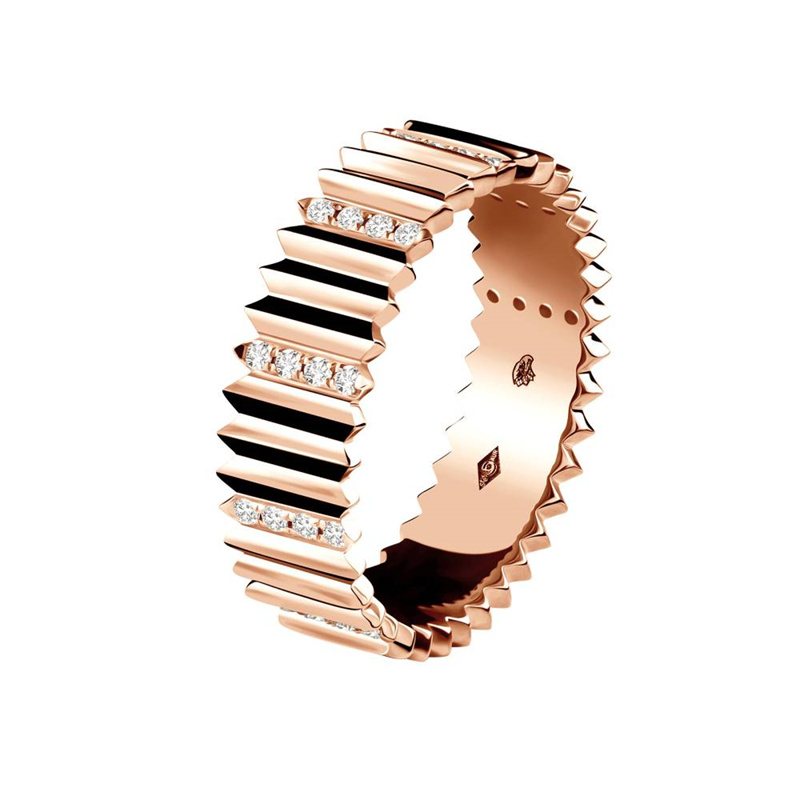The Advantages of CNC Technology in Custom 925 Silver Bracelet Manufacturing
Table of Contents
- Introduction
- Understanding 925 Silver and Its Popularity in Jewelry
- What Is CNC Machining?
- Why Choose CNC for Custom 925 Silver Bracelets?
- 4.1 Precision and Intricate Detailing
- 4.2 Consistency in Mass Production
- 4.3 Faster Production Times
- 4.4 Reduced Material Waste
- 4.5 Enhanced Durability and Structural Integrity
- Comparing CNC with Traditional Jewelry-Making Techniques
- 5.1 Handcrafting vs. CNC Precision
- 5.2 Lost-Wax Casting vs. CNC Milling
- 5.3 Laser Cutting vs. CNC Machining
- Design Flexibility with CNC Technology
- 6.1 Complex Geometric Patterns
- 6.2 Personalized Engravings and Text
- 6.3 3D Modeling and Prototyping
- Quality Control and Finishing in CNC-Made Silver Bracelets
- 7.1 Smooth Edges and Polishing
- 7.2 Oxidation and Tarnish Resistance
- 7.3 Weight and Comfort Optimization
- Sustainability and Cost-Efficiency in CNC Jewelry Production
- 8.1 Minimizing Silver Waste
- 8.2 Energy Efficiency in Manufacturing
- 8.3 Long-Term Cost Benefits for Businesses
- Case Study: A Custom 925 Silver Bracelet Order Using CNC
- Future Trends: CNC and Smart Jewelry Manufacturing
- Conclusion
1. Introduction
The jewelry industry has evolved significantly with advancements in manufacturing technology. Among these, Computer Numerical Control (CNC) machining has revolutionized the production of custom 925 silver bracelets, offering unparalleled precision, efficiency, and design flexibility.
This article explores why CNC technology is superior for crafting high-quality 925 silver bracelets, comparing it with traditional methods, analyzing its advantages, and showcasing real-world applications.
2. Understanding 925 Silver and Its Popularity in Jewelry
925 silver (Sterling Silver) consists of 92.5% pure silver and 7.5% alloy metals (usually copper), enhancing durability while maintaining its luxurious appeal.
Why 925 Silver?
- Hypoallergenic (suitable for sensitive skin)
- Affordable luxury compared to gold or platinum
- Timeless aesthetic with a bright, polished finish
- Versatile for customization (engravings, gemstone settings, etc.)
3. What Is CNC Machining?
CNC (Computer Numerical Control) machining is a computer-controlled manufacturing process where pre-programmed software dictates the movement of machinery.
How It Works for Jewelry:
- 3D Design Creation (CAD software)
- Programming Tool Paths (CAM software)
- Precision Cutting/Milling (using CNC machines)
- Finishing & Polishing
Types of CNC Machines Used in Jewelry:
- CNC Milling Machines (for intricate cuts)
- CNC Lathes (for symmetrical designs)
- CNC Laser Cutters (for ultra-fine detailing)
4. Why Choose CNC for Custom 925 Silver Bracelets?
4.1 Precision and Intricate Detailing
- CNC machines can achieve microscopic accuracy (up to 0.001mm).
- Ideal for complex patterns, filigree work, and personalized engravings.
4.2 Consistency in Mass Production
- Every piece is identical, eliminating human error.
- Essential for brands selling bulk custom orders.
4.3 Faster Production Times
- Reduces manual labor—no need for hand-carving each piece.
- A CNC machine can produce dozens of bracelets in hours.
4.4 Reduced Material Waste
- Optimized cutting paths minimize silver scrap.
- More cost-effective and eco-friendly than traditional methods.
4.5 Enhanced Durability and Structural Integrity
- CNC-milled silver has fewer weak points compared to cast jewelry.
- Stronger clasps and hinges due to precise engineering.
5. Comparing CNC with Traditional Jewelry-Making Techniques
5.1 Handcrafting vs. CNC Precision
| Factor | Handcrafted | CNC Machined |
|---|---|---|
| Precision | Human-dependent | Machine-perfect |
| Time per piece | Slow (hours/days) | Fast (minutes) |
| Cost | Higher (labor) | Lower (automated) |
5.2 Lost-Wax Casting vs. CNC Milling
- Lost-Wax Casting:
- Requires mold-making, wax carving, and casting.
- Risk of air bubbles and imperfections.
- CNC Milling:
- Directly carves silver, no mold needed.
- Higher structural integrity.
5.3 Laser Cutting vs. CNC Machining
- Laser Cutting: Best for flat designs.
- CNC Machining: Can create 3D sculpted bracelets.
6. Design Flexibility with CNC Technology
6.1 Complex Geometric Patterns
- Celtic knots, mandala designs, and latticework are easily achievable.
6.2 Personalized Engravings and Text
- Names, dates, coordinates can be etched with perfect clarity.
6.3 3D Modeling and Prototyping
- Clients can preview designs before production.
- Adjustments are easy without wasting material.
7. Quality Control and Finishing
7.1 Smooth Edges and Polishing
- CNC leaves minimal burrs, reducing manual polishing time.
7.2 Oxidation and Tarnish Resistance
- Tighter molecular structure (compared to casting) slows tarnishing.
7.3 Weight and Comfort Optimization
- CNC allows hollow designs to reduce weight without sacrificing strength.
8. Sustainability and Cost-Efficiency
8.1 Minimizing Silver Waste
- Nesting software optimizes material usage.
8.2 Energy Efficiency
- Modern CNC machines consume less power than traditional smelting.
8.3 Long-Term Cost Benefits
- Lower labor costs and higher production rates improve profit margins.
9. Case Study: A Custom 925 Silver Bracelet Order Using CNC
Client: A luxury jewelry brand in Sweden.
Requirement: 500 personalized bracelets with engraved names.
Process:
- CAD design finalized in 3 days.
- CNC production completed in 1 week.
- Zero defects in the batch.
Result:
- 30% faster than traditional methods.
- 15% less silver waste.
- Perfect consistency across all pieces.
10. Future Trends: CNC and Smart Jewelry Manufacturing
- AI-assisted CNC designs for faster prototyping.
- Hybrid CNC + 3D printing for ultra-complex designs.
- Blockchain-tracked CNC jewelry for authenticity verification.
11. Conclusion
CNC machining is the future of custom 925 silver bracelet production, offering unmatched precision, speed, and cost-efficiency.
For jewelry brands and buyers seeking high-quality, customizable, and durable silver bracelets, CNC technology is the optimal choice.
